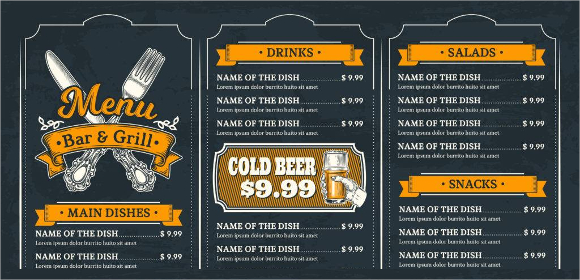A Guide to Designing Menus for Different Culinary Cuisines

In the ever-evolving landscape of the culinary world, menu design plays a pivotal role in attracting customers and setting the tone for a memorable dining experience. Whether you are a seasoned restaurateur or a budding chef, understanding the nuances of menu design for various culinary cuisines is essential. In this comprehensive guide, we delve into the intricacies of creating menus that not only tantalize taste buds but also leave a lasting impression on your patrons.
Understanding the Importance of Menu Design
Crafting the Perfect First Impression
The menu is often the first interaction a customer has with a restaurant. It serves as a visual representation of the culinary journey that awaits them. Therefore, menu design is not just about listing dishes; it’s about creating an immersive experience from the moment the diner lays eyes on it. Utilizing captivating menu templates can assist in establishing a consistent and visually appealing first impression.
Aligning with the Culinary Theme
Menus should be a reflection of the culinary theme and atmosphere of the restaurant. Whether it’s a cozy Italian trattoria or a vibrant Mexican cantina, the design should seamlessly integrate with the overall aesthetic. This creates a harmonious dining environment that resonates with customers.
Tailoring Menus for Specific Cuisines
Italian Cuisine
Embracing Elegance in Typography and Imagery
For Italian cuisine, the menu design should exude sophistication. Opt for classic fonts that evoke a sense of tradition. Incorporate images of picturesque landscapes, vineyards, and authentic Italian ingredients to transport diners to the heart of Italy.
Japanese Cuisine
Minimalism is Key
Japanese cuisine is renowned for its simplicity and precision. Reflect this in your menu design by embracing minimalism. Clean lines, subtle colors, and high-quality images of fresh sushi and sashimi can entice customers and communicate the essence of Japanese culinary artistry.
Mexican Cuisine
Vibrant Colors and Bold Graphics
Mexican cuisine is all about bold flavors, and your menu should mirror that enthusiasm. Use vibrant colors like reds, greens, and yellows. Incorporate lively graphics of chili peppers, sombreros, and festive Mexican motifs to evoke the energy of Mexican culture.
Balancing Creativity with Readability
Choosing Fonts Wisely
Font selection is crucial in menu design. Opt for easily readable fonts, especially for the main text. However, feel free to inject a touch of creativity in section headers or dish names to add flair without sacrificing clarity.
Strategic Use of White Space
An overcrowded menu can overwhelm customers. Embrace white space to give your menu a clean and organized look. This not only enhances readability but also allows each dish to stand out.
Implementing Practical Tips for Effective Menus
Highlighting Signature Dishes
Create a dedicated section for signature dishes. Use eye-catching graphics or borders to draw attention to these culinary gems. This not only helps in upselling but also adds a sense of exclusivity to the dining experience.
Utilizing Descriptive Language
Engage your customers with enticing descriptions of dishes. Instead of generic terms, use descriptive language that sparks curiosity and paints a vivid picture of the flavors awaiting them.
Conclusion
In the competitive world of dining establishments, a well-crafted menu is a powerful tool that can elevate your restaurant to new heights. By understanding the nuances of menu design for different culinary cuisines, you not only cater to diverse tastes but also create a memorable and enjoyable dining atmosphere.
